- Home
- Edmund White
City Boy Page 23
City Boy Read online
Page 23
Although Gardner had promised not to mention Barth’s fiction, the very first thing he did in front of Barth’s students was to attack John Barth. Barth, who was sitting toward the front of the crowded room, objected, but Gardner plowed on. Angry words were exchanged between the two great men. A reporter from the Baltimore Sun was sitting in the back and furiously scribbling notes—and soon the story had gone national.
A confrontation of this sort was especially dramatic in Baltimore. In crowded, pedestrian New York where everyone was a loudmouth and defended his or her turf with a ferocity unknown to mild auslander, verbal fights occurred daily. The leader of the New York teachers’ union would attack a black educator who’d proposed that Ebonics be taught in the public schools. In the spring of 1970 Earth Day was celebrated, one of the first mass demonstrations in favor of the environment. Gay Day, anti–Vietnam War protests—every month brought another huge march.
But in the rest of the country (this melancholy, lonely country) the streets were empty, people were sealed off in their offices or cars or houses, no one saw anyone outside his or her circle or had any contact with strangers. Suburbia, television, and the automobile had isolated everyone—perhaps a good thing in such a potentially violent country. Even in gated communities, miles and miles away from the nearest ghetto, the frightened golden-agers were all buying weapons or taking karate classes. It was precisely in those places that were the safest that the sheltered populations most often expected imminent violence. Armageddon was both a religious and a looming social reality for nearly a third of Americans. In Utah, houses for sale were advertised as having “fully furnished” basements, meaning set up as bunkers for survivalists when the Final Days began, when the Rapture started separating the sheep from the goats. Which would be tomorrow. Or the next day.
I’d lived through both of the blackouts in New York. The first one, in 1965, went more or less peacefully by since it happened when it was getting cold, but the second one occurred on July 13 and 14, 1977, and led to two days of rioting and looting. Some 1,616 stores were looted, and at certain points the looters were looting the other looters. Altogether 3,776 people were arrested—the largest mass arrest in the city’s history—and 1,037 fires were reported.
New York was a mess by the late 1970s. The city had lost hundreds of thousands of jobs. It was from time to time incapable of paying teachers their salaries. Graffiti covered every square inch of the interiors of subway cars, which were awash with garbage. Passengers were subjected to the intolerably loud music coming out of boom boxes. Crime had risen faster in the sixties (and was continuing to rise in the seventies) than in any other American city since the 1930s. In 1975 Mayor Beame had furloughed thousands of city workers, including cops and garbagemen. When Beame asked President Ford for federal assistance to meet the payroll, Ford told New York to drop dead. New York had been called Fun City. Now it had become Fear City and Stink City. Garbage left on the streets would go weeks without being collected.
I remember I had a boyfriend at the time, Ken, who sold sappy greeting cards and was a determined masochist. He was from Kentucky and talked all the time—in such an irritating, constant motormouth way that it was easy to whip his butt from time to time out of sheer frustration. We were sitting in his apartment—him talking, me smoldering with boredom—when the 1977 blackout started. He thought it was a lark, a sort of “trend,” and he was always alert to trends. He lived in the Village on West Fourth Street around the corner from Pizzeria Uno, where within an hour or two the hundreds of frozen pizzas were quickly thawing and were being handed out to passersby completely free. Ken grabbed several and “we had a ball,” as he put it. “This is fabulous,” he said. He wanted me to get “into” it more, but there was a limit as to how much cheery excitement a sadist could exhibit to his slave. I was self-conscious about my role because it wasn’t my usual one. We sat on his fire escape. The earlier blackout had been reassuring because it had shown how good-natured and ultimately how disciplined New Yorkers were. The new blackout showed how racially divided we were, how much anger seethed just below the surface, how rapacious and every-man-for-himself we’d all become.
In 1978 I moved back downtown. Keith McDermott was living mostly on the West Coast, my nephew had decided to return to the Midwest and was enrolled in the University of Chicago—and I found the West Side depressing. I had a part-time beau, Norm Rathweg, who found me a studio apartment in the Colonnades on Lafayette Street, a series of scruffy Greek Revival buildings from the 1830s—the most elegant address of the period, filled with Astors, but by the late 1970s in a picturesque state of decay worthy of the French Quarter of New Orleans. My big studio apartment had twenty-foot ceilings, parquet floors, a small white-marble fireplace, and tall windows outfitted with wood shutters that folded back into the deep window frames. My windows looked down on a garden restaurant, and in the evening in summertime I could hear the friendly murmur of voices and the rattle of silverware on dishes. In the winter I usually had a fire on the grate, or a hibachi on which I grilled swordfish or lamb for guests. Norm put in a new kitchen and bathroom and loft bed and painted the whole thing gray-blue with white woodwork. When my nephew visited with a school friend, Richard Kaye, they were shocked by how humbly a writer could live. They were invited to dinner and were impressed and confused that I, an out homosexual, was trying to fix up the literary critic Richard Gilman with a single woman I knew. What business did I have, they wondered, meddling with the lives of straights?
I had met Norm Rathweg at the Sheridan Square Gym, where I’d been working out since the mid-1960s. When I started lifting weights, it was still an unusual activity for a gay man. In the fifties and sixties gays wanted to be as thin as possible but it never occurred to them to be—well, not boys but men. In the seventies, however, we stayed thin but began to add muscles—a well-defined chest, a firm, prominent butt, massive legs, baby biceps, more muscled shoulders. I was one of the first in this metamorphosis from boy to man.
A more dramatic example of the transformation was Norm. When he arrived at the gym, he was a tall, skinny boy, pale with nearly invisible blond eyelashes and a blancmange complexion. He was timid and never spoke to anyone except his lover, Louis Keith Nelson. They were at the gym every day but kept to themselves. Norm wouldn’t even meet my eyes or anyone else’s. The only assertive thing he did was to burp loudly, which seemed to be unconscious.
But slowly he changed. He began to fill out and muscle up. He became more confident. I started to go out with him though it was understood that he and Louis Keith Nelson were a couple and would stay together. Back then, in the 1970s, these questions of fidelity and couplehood didn’t come up and we wouldn’t exactly have known how to respond to them. Introducing the issue now slightly falsifies the quiet, natural way in which we assumed everyone would have multiple sex partners, that jealousy was definitely not cool, and that new people could be regular fuck buddies or part-time lovers, that the molecule could always annex a new atom. Of course everyone tacitly feared that a new dalliance might take a lover away forever, but this seldom happened. It was as if the three elements (love, sex, friendship) that straight people centered on one other person we gays distributed over several people and this distribution was a more solid form than companionate marriage.
While I lived in that apartment in the Colonnades, I had lots of group sex—there was a beefy, slightly crazy American Indian from Colorado who’d been “discovered” at sixteen by Allen Ginsberg at the Naropa Institute in Boulder. He had a smooth body like pillows stuffed tightly inside a silk parachute. There was a handsome Norwegian flight attendant from St. Paul with a cool, bemused manner, though he was open to almost any suggestion. There were lots of other guys and we lay around in my loft bed talking and kissing and listening to music and getting high. I was in my late thirties and gay men of my generation had earlier always assumed that sex would come to a screeching halt at age thirty, but now that we’d long before reached that landmark age, it seemed just
to go on and on, as did one’s youth. People of my parents’ generation had been married at twenty-two, had had children two years later, and were worn-out and paunchy by forty, but we kept working out and staying up late and falling in and out of love, “immature” but weirdly youthful.
We wondered where we were all heading. We assumed that gay life had branched off from normal family experience, sort of like Homo sapiens evolving in a separate direction from Homo erectus. We thought that gays had a separate destiny, that we were meant to point the way to more elegant and comprehensive models of adhesiveness. We were hostile to the idea of assimilation since we knew that would mean resembling straights, whereas we felt we had something better to offer.
Norm was emblematic of many of the young gay men who came up in the 1970s. He was from Florida, where he’d been a bookish nerd. His father had been a famous college athlete who’d had a devastating motorcycle accident and lost his legs and as an invalid would lie in bed drinking and insulting his big, fearful, skulking son, calling him a creep and a faggot.
Norm was turning himself into someone new. Bruce Mailman, who owned our building in the Colonnades, hired Norm to design and build the St. Marks Baths on St. Marks Place. I had gone to these baths years before when they’d been dirty and Ukrainian with a masseur in the basement rumored to be the cannibalistic original from Tennessee Williams’s story “Desire and the Black Masseur.” Norm put in lots of “wet areas” and solid primary colors and spotlights and warm terra-cotta tiles. He who’d been scared of his own shadow was now wearing a hard hat and climbing on steel beams several stories high and pulling girders into place and making hundreds of small decisions every day—and they all worked. Then Bruce asked him to build the ultimate disco—what I called “the Hindenburg of discos,” little realizing that it would indeed be the biggest and one of the last giant gay dance halls. The Saint opened in 1980 in the old Fillmore East, a rock-concert hall on Second Avenue. A mesh-enclosed ramp led up and up to the immense dance floor of nearly five thousand square feet inserted under a dome in the building with robotic arms shuffling and pinpointing whole phalanxes of lights. In the center was a stage where Madonna or Whitney Houston would perform. Late, late at night (in reality toward noon the following day) the dome would turn into a planetarium and thousands of stars would slowly drift through space. Above and outside the dome on one side were the remaining seats of what had once been the top balcony. There stoned young men would sit in confused isolation in the dark and look down at the illuminated antics of the dancers. If you were properly stoned, they would look like miniature Santa’s helpers manufacturing mountains of invisible toys. Since I lived just five blocks away, I’d sometimes set the alarm and show up at five in the morning and head right to the balcony, where many of those lonely men were ready for sex.
Norm turned himself into a big man among men. He and Louis built the Chelsea Gym, which epitomized gay Chelsea for nearly a decade. I’d see Norm marching down the street with four other young men all in their thirties, wearing jeans and leather jackets, their hair cropped short, their voices loud. They weren’t bullies or pigs. They read books. They listened to classical music. They fell in love. Their politics were progressive. They talked about ideas. But Norm could command a team of straight workingmen on a building site and hide his emotions under a gruff exterior. He was the New Gay Man. A straight journalist would devote a chapter to him in a book on contemporary men.
At Norm and Lewis’s apartment a lot of these big, hearty sensitive men would sit around and eat good food buffet-style and drink white wine and talk about their feelings or their wider interests. I can remember marching in a gay pride parade with all of them, our arms around each other’s shoulders. We were with the leather boys, all of them smelling of hide and beer.
One of the stars of that group was Thom Gunn, the great English poet who’d lived most of his life in San Francisco. Thom was tall, bearded, lean, a serious leather guy and a decade older than all of us (though he looked our age). He was fascinated by Norm and maybe was just a bit in love, even if his “type” was younger and frailer. But when Norm died early on of AIDS, Thom wrote a beautiful elegy to him, “Courtesies of the Interregnum.” If you google Norm you’ll find nothing about the astonishing buildings he designed. You’ll find him only as a link to Gunn’s elegy.
I visited Thom two or three times in San Francisco, and once in a great while I’d phone him from New York out of the blue. He lived in a small commune of gay men and with a lifelong lover, Mike Kitay, an American he’d met at Trinity when he was a student. Each of the five or six men in the commune had his cooking night, and Thom took the meals and the shared responsibilities seriously. The commune was comfortable and calm up on the Haight off the Castro on the other side of Market. I brought Thom out to Princeton once to give a reading, but he seemed uncomfortable and failed to convince the audience of his true qualities. He’d lost his confidence and mumbled. He’d retired from teaching poetry at Berkeley and stopped writing; this silence was painful for him. He was also doing a lot of drugs toward the end of his life, mostly connected with sex.
He’d always been fascinated with America. His mother had committed suicide when he was fifteen, and after Trinity he came to the States. Donald Hall, the poet, told me that he’d seen Thom even at that time in full leathers and on a motorcycle, and a great photo shows him looking like a Hells Angel on a bike (it’s a 1963 picture by Mike Kelly). He’s in jeans and motorcycle boots and a tight-fitting black leather jacket and a hood, the only incongruous element his broad smile. One of his early books, My Sad Captains, has a Shakespearian title that seems suitable to all those leather men he liked, though Thom wrote chiseled, formal, rather impersonal poems early on—the influence of Yvor Winters, his teacher at Stanford. Winters, a critic and poet born in the Midwest at the turn of the century, preached an austere, imagistic ideal of formalist poetry, and Gunn responded to it. Fortunately, in the 1980s, AIDS—and the death of many friends—made Gunn a warmer, more expressive poet, especially in his best collection, The Man with Night Sweats (1992). AIDS gave us all a subject and a seriousness that our work had never before possessed. Thom brought to bear on this subject a rigorous technique and quiet control he’d acquired over the years.
Typical of Gunn’s late strong work are these lines, with their beautifully subtle enjambment, written to Mike Kitay:
Nothing is, or will ever be,
Mine, I suppose. No one can hold a heart
But what we hold in trust
We do hold, even apart.
As the seventies progressed, gay sexual tastes became more and more outré. Gunn celebrated those extremes. He quoted with approval an article in the Village Voice by Ellen Willis in which she said that the lesbian movement of the seventies was not about liberating desire but about extending female solidarity. “For the gay male community,” on the other hand, “solidarity was, at its core, about desire.” I suppose another way of putting that was, lesbianism was to feminism as male homosexuality was … to nothing. There was no fourth term in the equation. Gay men had never suffered as men but had been stripped of male privilege by the straight community. They wanted back what they considered to be their birthright.
Gunn saw gay men in the seventies—the ones who were out there, sexually active—as heirs to the drug-taking hippies. Gays at the saunas were “drug-visionaries.” “At the baths,” Gunn wrote, “or in less organized activity, there was a shared sense of adventure, thrilling, hilarious, experimental.” Gunn saw gays as crossing dramatic, enormous gulfs “on the huge pinions of our sexual momentum.” Referring to a San Francisco baths, Gunn wrote:
This was the Barracks, this the divine rage
In 1975, that time is gone.
All here, of any looks, of any age,
Will get what they are looking for,
Or something close, the rapture they engage
Renewable each night…
I can remember that in the midsixties New York had just o
ne leather bar, and it was inconspicuous and customers would wear their normal clothes and carry a change of costume in a bag, then switch to their chaps and black leather vest in the taxi. They were terrified a friend, even a gay friend, might see them going out in this freaky rig. Sadomasochism still sounded perverted and ever so slightly tacky—sort of New Jersey. And elderly. As if working-class, old gay men who couldn’t compete in the real bars could look appealing in leather, or at least threatening.
By the seventies all that was changing. In 1972 L.A. Plays Itself, a hard-core porn film starring the charismatic director Fred Halstead, opened on Fifty-fifth Street and ran briefly before the cops closed it down. It had a notorious fisting scene, and the whole atmosphere of the second half of the movie was in complete grim contrast to the plucked pretty-boy look of the new East Coast porn such as The Boys in the Sand. The Anvil, a bar with go-go boys, opened in 1974 just south of Fourteenth Street. Boys danced on the bar on the ground floor while men had sex downstairs in the darkened bowels of the building. I never saw it, but people claimed uptown customers—even elegant women—fisted the go-go boys after carefully removing their rings.
In 1975 a hard-core S&M monthly magazine, Drummer, started publishing. It had fairly technical information about how to torture and submit to it—we read it with avidity. The whole look and smell of gay New York culture was changing toward beefier bodies, beards, and the odor of brew, harness, sweat, and Crisco. Keith McDermott said that New Yorkers were so pale and unhealthy looking that black leather was the only look that suited them.

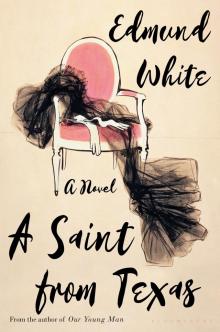 A Saint from Texas
A Saint from Texas The Farewell Symphony
The Farewell Symphony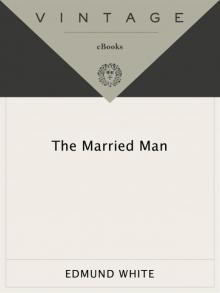 The Married Man
The Married Man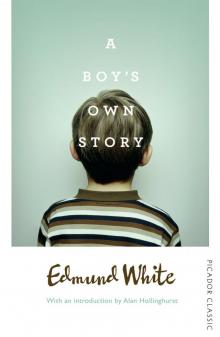 A Boy's Own Story
A Boy's Own Story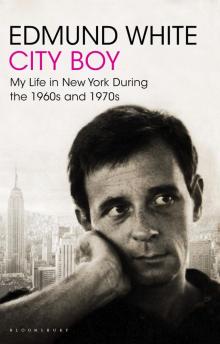 City Boy
City Boy Inside a Pearl
Inside a Pearl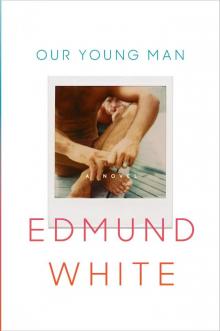 Our Young Man
Our Young Man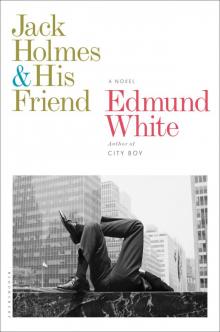 Jack Holmes and His Friend
Jack Holmes and His Friend